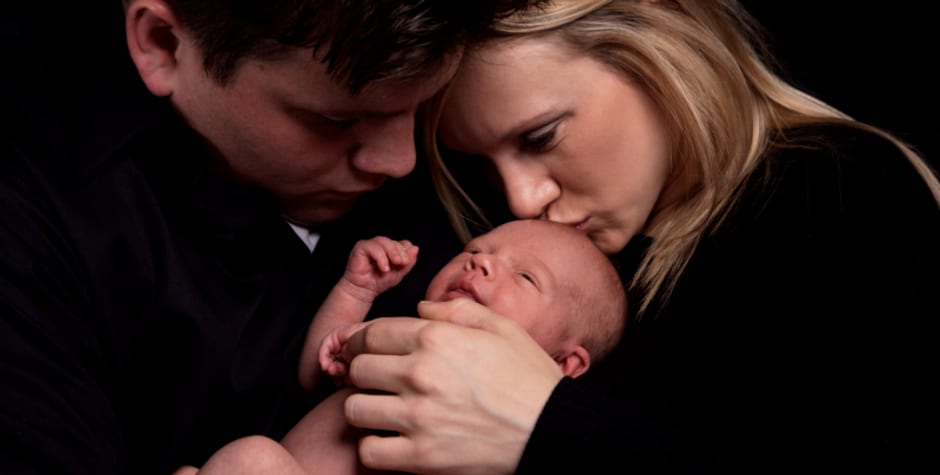By Cherline Louissaint, esq.
Abstract from the book "Law and Prevention of Abortion in Europe", Sallux.
I - Social and Familial Risk Factors............................................................................. 2
A - The typology of risk factors................................................................................................ 3
- Economic insecurity......................................................................................................... 3
- Celibacy........................................................................................................................... 5
- Pressure from relatives..................................................................................................... 6
- The continuation of studies.............................................................................................. 7
B - Family instability.................................................................................................................... 7
- Family Instability and high number of abortions.............................................................. 8
- Family Stability and restrained number of abortions...................................................... 12
II - Contraception, solution or aggravating factor?.................................. 13
A -The correlation between contraception and abortion.................................................. 14
- States recording high contraceptive use.......................................................................... 14
- States with a limited use of contraception...................................................................... 16
B – Is there a Causal Link between Contraception and Abortion?................................... 17
- On the individual level: the imperfect effectiveness of contraception........................... 17
- Collective level: the “contraceptive mentality”.............................................................. 19
Very few people wonder what really pushes a woman to resort to abortion. The general perception is that a woman who does not want to carry her pregnancy to the end chooses to terminate it. People do not find it necessary - or even desirable - to understand the circumstances or the reasons which lead to such a decision. Abortion has (apparently) become, with rare exceptions, a commonplace act, guaranteed by positive law, which doctors often evoke as a possible option at the announcement of a pregnancy.
This trivial nature is confirmed by how often women resort to this act: in 2008 alone, 44 million abortions were performed worldwide, of which 6 million were carried out in developed countries.[1] Also in 2008, the abortion rate, which is the number of abortions per 1,000 women of childbearing age (15 to 49), was 28‰ worldwide and 27‰ in the European Union. More recently, in 2012, available data pegged the number of abortions within the EU at 642,000.[2]
At first glance, one could be convinced by such statistics that abortion is a common and frequent means of avoiding an unwanted birth rather than the “ultimate solution” people resort to with the intention of addressing a desperate situation. The decision to abort is still far from trivial. Thus, it is important to understand the ins and outs of such a decision, considering its severity and frequency. The decision to abort is naturally taken within a social, economic and cultural context. To understand this context, one has to weigh the circumstances that lead a woman to choose abortion, decipher her reasons for undertaking such a step, and find out whether the decision to abort is uniquely the woman’s choice or if her partner is involved in this process.
Thus, even though abortion is recognised in most Western countries as a “right”, the decision to abort may not always be a happy one, since the recourse to this act often occurs when the woman concerned is in “distress”; the resulting distress itself being a set of economical, sociological and cultural circumstances. In any case, we cannot afford to ignore the existence of a real problem and remain blasé by lumping together all the reasons given by women for aborting as “personal reasons”. It is therefore important to understand what those circumstances are and how they influence women’s decision to terminate their pregnancies.
First of all, it is necessary to draw up a typology of economic and social “risk factors” of abortion based on official statistics and on various sociological researches (I), and secondly, to consider the delicate issue of whether, as is often argued, contraception is a remedy to abortion or an aggravating factor, as some studies tend to highlight (II).
I - Social and Familial Risk Factors
Women who became pregnant without having planed it do not always resort to abortion. Some of them, despite the difficulties that an unplanned birth brings, choose to carry the pregnancy to full term and have the baby, while others in better situations make the opposite choice. In other words, there is no automatic link between unwanted pregnancy and abortion, that is to say, if abortion is necessarily the result of an unwanted pregnancy, the reverse is not necessarily true.
It is therefore interesting to consider the factors that lead a woman who mistakenly gets pregnant to abort as well as the factors that make her choose to keep the baby. Such a task is obviously not easy, inasmuch as, to a large extent, the decision to abort or keep the child depends on subjective factors, in that it originates in the most intimate consciousness of the woman and cannot be reduced to a rigid automatism. However, beyond these factors, or rather simultaneously with them, it is possible -- based on research and statistical studies -- to identify objective factors. They should be understood as referring to specific situations - economic or family - in which a woman, all things being equal, easily decides to abort. Again, it is important to stress that these objective factors must be understood as risk factors and not as “automatic factors”: it is not inconceivable that a woman exposed to objectives risk factors decides to keep her child, and that, another woman who apparently is not threatened by such factors take the opposite decision.
After trying to make a typology of the different risk factors that may encourage pregnant women to resort to abortion (A), it is important to highlight the special role of family instability as a key factor to the high number of abortions (B).
A - The typology of risk factors
At the outset, it should be emphasised against a discourse aimed at “trivialising” abortion in order to spare women who resort to it the feeling of guilt that research shows the contrary; that is to say that such an act is anything but trivial. Thus, according to a survey conducted by the IFOP in 2010,[3] 83% of the French women consider that “abortion leaves psychological scars that women find difficult to bear”, and 60% of them were of the opinion that “society should do more to help women to avoid recourse to abortion”. Moreover, it appears from the same survey that women wish to be assisted in making a decision should they have an unplanned pregnancy. Thus, 54% mentioned “information on the material assistance” to which they are entitled, and 83% said that “details of the aids available to pregnant women and young mothers” should feature in the official booklet of information given to pregnant women requesting an abortion. Moreover, half of the respondents mentioned the need to have “a discussion with health professionals about the consequences of that choice”. Finally, for 67% (and up to 76% under 35 years) “It would be good to make pregnant women who may find it difficult to raise their child aware of the possibility of giving the child up for adoption after delivery.”
What are these distressing situations that are likely to push a woman to abort? Based on several surveys conducted in France and abroad, it is possible to draw up a typology of these factors and, in particular, to identity four key factors: economic insecurity, celibacy, pressure from relatives and further education.
Often, the reasons women give for resorting to abortion are financial or material. Thus, in the survey conducted by the FIFG in 2010, 47% of the French population (up to 58% of those between18-24 years) reported that “material conditions” constitute “the main factor that pushes women to resort to abortion.”
Such a belief is not unrelated to reality. For example, in France, women who do not have health insurance practice repeated abortions more than those covered by health insurance (37.5% against 31.4%).[4] In Belgium, hospitals that perform abortions emphasise that social and/or financial insecurity is common; 30% of women received are not covered by social security.[5]
Economic insecurity is particularly sensitive for women seeking employment. Hence, it is not surprising that unemployment appears as a factor that facilitates the decision to abort. In France, although the proportion of unemployed women among those who have abortions remains stable (10.5 to 10.8% between 1990 and 2011),[6] unemployed women resort to abortions more often: the rate of repeated abortions rose by 15 points, from 27.1 to 42.8%.[7] The number of unemployed women among the population of women who have abortions is even higher in Italy (19%)[8] and Sweden (23.7%).[9]
A survey conducted in France by the Direction de la Recherche, des Études, de l’Évaluation et des Statistiques (Directorate for Research, Studies, assessment and Statistics) in 2007 showed that women living alone are more likely to have an abortion, compared to those living with a partner.[10] Women aged between 20 and 25 mostly abort in order to pursue further education whereas for those over 25 years, it is due to breakups.[11] This observation has been confirmed, since in 2011, 51.7% of women who had abortions were single (against 44.1% in 1990).[12]
The number of single women among those who have recourse to abortion is even higher in Wales and England (81% in 2014 against 77% in 2004) and also in Belgium (68.7% in 2011).[13] Moreover, 20% of abortions in Belgium are directly due to instability of the relationship with the partner (casual relationship, too recent, extramarital, etc.), denial of pregnancy by the partner in 2.6 % of the cases.[14] Therefore, the fact that a woman is left alone to deal with an unwanted pregnancy affects the choice she makes to abort or not, perhaps because she is afraid to bear alone the responsibilities that come with the pregnancy or because she is facing financial difficulties.
Research conducted in the US between 2008 and 2010 on a group of women of childbearing age[15] found that, in general, in the process of deciding on abortion, women take into consideration the quality of the relationship with their partner and the support they might receive from him. Thus, the nature of the relationship with their partner and the challenges they face, especially if the support or presence of the partner is lacking, are all factors that lead women to consider terminating the pregnancy. In this context, abortion becomes a way to end the relationship rather than an act motivated by fear or violence by a partner.
In France, 46% of teenage girls who interrupted their pregnancy made the decision with their partner or family.[16] Furthermore, a study on a group of women of all ages in this same country showed that 9% of them decided to abort as a result of pressure from their family or partner.[17] Another study conducted in Germany on abortion patients revealed that in 40% of cases, the decision was taken based on the relationship with the partner, either because he put pressure on the woman (29%) or because he was alcoholic or physically abused the woman.[18] Women who have abortions are three times more likely to have suffered physical, mental or sexual abuse than women who carry their pregnancy to full term (25.7% against 9.3%).[19]
Legend.
1: Percentage of female students among all women who have abortions in a year;
2: Student who have had an abortion in the past (the second column is for 2007, not 2011);
3: Percentage of female students among women who practice the repeat abortion.
In France, a study by the Institut national de la santé et de la recherche médicale (National Institute for Health and Medical Research) revealed that the number of students resorting to abortion in France is increasing. In 2011, 19% of abortion patients were students; this proportion was only 14.6% in 1990.[20] Moreover, nearly 4% of them have abortions every year.[21] Finally, students who have abortions are more likely to have already had an abortion in the past (9.3% in 1990 to 15.8% in 2007).[22]
Conversely, women with low level of education are more likely to abort. In France, 35.3% of women who have not obtained a Bachelor had undergone multiples abortions.[23] 46% of Italian women who have abortions have just the baccalaureate level and 92% are without university degrees.[24]
The risk factors just discussed are to be considered from an individual point of view, that is to say from the perspective of the pregnant woman: regardless of the specificities of the society in which she lives, she may be pushed to end the pregnancy whether she faces one or more of these factors. This applies, for example, to a woman in a precarious economic situation and in an emotionally unstable relationship.
But it can also be interesting to find out the factors that may lead to an increase in the number of abortions, from a collective point of view, that is to say, in the society as a whole. Indeed, a woman who mistakenly gets pregnant may be exposed, at the individual level, to high risk factors of abortion, even if the society in which she lives has a reduced number of abortions. Conversely, the fact that a woman lives in a society with a high abortion rate does not necessarily mean that she would resort to abortion.
In fact, statistics reveal the existence of a connection between family stability and the number of abortions in a society: while countries with increased family instability have a high abortion rate (1), those in which the family institution remained solid are able to limit this phenomenon (2).
The institution of compulsory sex education lessons, far from curbing the proliferation of early sex, has, on the contrary, encouraged it (a), thus making marital instability a standard (b).
In the past, becoming sexually active was largely related to marriage, especially for women: most often, women had their first sexual experience with their husbands or future husband.[25] But in France today, young women have a greater number of sexual partners than older women; this number increased from an average of 1.8 partners in 1970 to 4.4 in 2006. Consequently, if for the older generation, 70% of the first partners were or became their spouses, this rate has reduced significantly in the new generation, since only 20% of the women had their first intercourse with their spouse or whoever was to become their spouse.[26]
While in most Western countries, compulsory sex education lessons have been established in order to avoid unwanted pregnancies - and, consequently, prevent abortions – among teenage and young women, studies in many countries have shown that in these countries, pregnancy and abortion rates among teenagers are still very high and even tend to increase. The explanation for this paradox is probably the fact that these courses, in reality, encourage teens to have sex at a young age.
Such a relationship of cause and effect is confirmed by the example of the United States, which recorded a dramatic decrease of 51% in the rate of teenage pregnancy between 1990 and 2010 (from 117 to 57 pregnancies per 1,000 women aged 15 to 19 years[27]). Such a reduction originates, to a large extent, in the abstinence campaign that was launched by the government since 1996 and has borne fruit: between 1991 and 2005, the number of high school seniors who were not sexually active increased from 33% to 66%.[28] A 2001 study also revealed that only 14% of gay teens had never had sex while this percentage reached 52% among heterosexual adolescents.[29]
However, States with a high number of abortions are those in which there is traditionally an early sex education program, particularly in schools.
It has been revealed that in France, where sex education courses were made compulsory to all levels in schools since 2001,[30] the proportion of young people having abortions steadily increased between 1990 and 2011: 6.8 to 8.5% (for young people aged 18-19 ) and 23.2 to 25.6% (for 20-24 year olds).[31] The abortion rate in these age groups was also surprisingly high in 2013: 21.8% and 28.8% respectively.[32] Minors between 15 and 17 are also strongly concerned by abortion, with a rate of 9.5%[33] in 2013. In addition, the percentage of minors who have abortion has increased steadily, rising from 3.6 to 6.3% between 1990 and 2011.[34]
The situation is perhaps even more striking in the case of Sweden, a pioneer country in terms of sex education -- introduced 1942 and made compulsory in primary schools from 1955. In fact, there are clinics which offer free advice on contraception to young people in all cities. However, despite a general decline in teenage pregnancies in the world in recent decades, the rate in Sweden has increased since the mid-1990s, and reached 29% in 2010.[35] The consequence of this significant increase in teenage pregnancies is high rate of abortion: 69% of these pregnancies are aborted. Thus, the abortion rate among adolescents in Sweden is one of the highest in Western Europe (including England and Wales) and represented 15.1% of all abortions in 2014.[36]
A similar observation can finally be drawn as regards the United Kingdom, the country in which sex education classes are mandatory since 1986, but the pregnancy rate among adolescents aged 15 to 19 years is one of the highest (47% in 2011). This rate naturally affects the teenage abortion rate, which is also one of the highest in Europe (20%).[37] Furthermore, with regard to England and Wales alone, the abortion rate was 11.1% among those under 18, and 2.5% among those below 16 years. In the latter category, 2,399 abortions were performed (2% were repeat abortions), while this number was estimated to 698 abortions among young people under 15 and 100 among those under 14 years.
Therefore, as denounced by the American historian, Tim Stanley, in The Telegraph,[38] and as was also noted by Professor Assuntina Moressi,[39] these statistics show that the wide spread of contraception and the establishment of sex education from an early age in the United Kingdom have not decreased abortion rates.
Indeed, there is, like in France, a repeated recourse to abortion among young women who consider it as a method of contraception, even though the “classic” methods of contraception are easily accessible. In the UK, where access to the pill is possible without medical prescription, nearly 1,428,000 million contraceptive pills were issued in 2008, while in Italy, where the pill is issued under prescription, only 381,000 were prescribed. However, we observe that, in Italy, contrary to what happens in the UK, abortion has been decreasing, even before the arrival of the “morning-after pill”.[40]
- The decrease in the number of marriages
In parallel with the proliferation of early sex, there is a weakening of couples, firstly manifested by the decrease in marriages. That is to say, since 1965, the marriage rate of the Member States of the European Union, i.e. the ratio between the number of civil weddings in a year and the average total population in that year, showed a decrease of almost 50%, from 7.8‰ in 1965 to 4.5‰ in 2011 (3.6‰ in France), while, at the same time, the divorce rate, i.e. the ratio between the number of divorces in a year and the average total population in that year, increased from 0.8‰ to 4‰.[41]
This decrease in the number of marriages has resulted in the increase in the number of couples who cohabit. This form of marital life is now common among youth aged 16-29 years (12.2% against 10.7%[42]) or very common in some states, such as France (24.6%), Sweden (21.2%) or the UK (20.3%).
- Increase in the number of births outside marriage
As a natural consequence of the decrease in the number of marriages, the proportion of children born outside marriage in the EU States doubled in a period of twenty years to reach 40% in 2011. The highest rates were in France (56.7% in 2012), Sweden (54.4% in 2013) and Belgium (52.3% in 2012). France and Belgium have undergone a profound change in this respect, since the number of children born out of wedlock in Belgium in 1970 was only 2.8% (i.e. the rate multiplied by 18) and 6.8% in France. The number of children born to single parents in European Union countries was stable between 2005 and 2013, from 4% to 4.3%.[43]
Percentage of children born outside marriage. (Source: Eurostat, June 2015.)
A US study published in 1996 explained the collapse of the marriage institution as a result of the legalisation of abortion as well as the increased access to contraception. According to this study, such a collapse, in turn, did not only lead to an increase in births outside marriage but also abortions among unmarried US women, which increased from 100,000 to more than 1.2 million, from the late 60s to the late 80s.[44]
The extension of the period of sexual activity had an impact on the increase in abortion and also on the family structure. Indeed, as highlighted by Nathalie Bajos,[45] marital instability has become the norm today.[46] Such an instability consequently increases the risk factors of abortion among several categories of the population, especially those living in poverty. Conversely, we find that, in countries where the institution of family is strong, the number of abortions remains low or decreases.
The low abortion rate in Italy, Ireland and Poland, is explained by the fact that in these countries, sexual and marital behaviour were, to some extent, not affected by contemporary changes in society, due in particular to the prevalence of Catholic values in the population and position kept by the institution of marriage.
In Italy, while the average divorce rate is particularly low (0.9 divorce per 1 000 in 2012) and the rate of birth outside marriage also modest (24.5 out of 100 births[47] against 40 out of 100 for all European Union), there is, in this country, a very low abortion rate (9 per 1,000 women aged 15 to 44 in 2013) and the number of abortions has decreased significantly since 1983, from a maximum of 234,800 in 1982 to 126,562 in 2007, and 102,760 in 2013 to 97,535 in 2014. In addition, married women resort less to abortion than those cohabiting or unmarried (42.7% against 57.3% in 2012).
According to Professor Moressi, the reason for the relatively low number of abortions in Italy is the solidity of the family institution: solidity resulting in stable family relationships and a strong attachment to parents. Thus, the arrival of a newborn, even unexpected, is still welcomed. Moreover, the historian Giulia Galeotti stressed the importance of Catholic roots in Italian culture:[48] roots that are not without effect on the moral and ethical values of population.[49]
Ireland, which has a very low abortion rate, and where abortion concerns mainly single women (80%, against 14% for married women),[50] is another example of a country where the attachment to marriage and more generally to the family is strong. Indeed, while the number of marriages tends to decrease in all the European Union member countries, it is increasing in Ireland (from 20,680 to 22,045 between 2013 and 2014),[51] so is the marriage rate (from 4.5 to 4.8 marriages per 1,000 inhabitants). Finally, aside from the fact that 65.9% of the children are born inside marriage,[52] the divorce rate is not only the lowest in the EU (0.6 per 1,000 in 2012) but it continues to decline.[53] The preservation of the institution of marriage institution is due to the strong Catholic roots of Ireland where 90% of the population is Christian (84% Roman Catholic) and where 68% of marriages were celebrated religiously in 2014.[54]
Finally, the same attachment to family values can be said of Poland, a country whose marriage rate is one of the highest in the EU (4.7 marriages per 1,000 inhabitants in 2013) and, therefore, recording one of the lowest rates of birth outside marriage (23.4%).[55] It is important to emphasise that sociological studies show that in the last 40 years the situation has remained unchanged in Poland, where the majority of the population considers the family as one of the most important goals in life before work, personal development and leisure, and all social and professional aspects of life.[56] Indeed, family, consecrated by the marriage, is virtually general in nature, and this explains why Poland is one of the countries where women marry earlier, at 26.6 years on average in 2013 (the average age for marriage is between 26.3 and 33 years in the EU), and where the average age at childbirth in 2013 was below that of the European Union, 29 years.[57] Yet again the prominent place given to the family reflects the Catholic faith;[58] the number of Catholics in Poland having been estimated at 87.2% of the population in 2012.
Therefore, the influence of the Christian faith and the prominence of the family institution play a positive role on the reception of a child in the event of an unwanted pregnancy, and are likely to lead to a drastic decrease in abortions. Marriage constitutes a stable framework conducive for parenting.
II - Contraception, solution or aggravating factor?
Insofar as the aim of contraception is to restrict the risk of unwanted pregnancy for women who use it, promoting widespread use of contraception as a solution to limit the number of abortions in a population may be tempting. Certainly - and the supporters of such a thesis easily agree - contraception is not an absolute guarantee in this respect, particularly because of the technical limitations peculiar to each of the contraceptive methods or simply because women do not always use these methods with the rigor they require. However – and this is the conviction of the supporters of such a thesis – though contraception cannot completely stop abortion, it is the appropriate solution to limit the number. From this point of view contraception must, despite its inevitable limitations, be encouraged for what it is, that is to say the prime factor in reducing, if not eliminating, abortion.
Statistical studies should, logically, confirm such an enticing thesis. They should provide definitive evidence that States which developed a wide contraceptive distribution policy are those which managed to eliminate, or at least reduce, abortion. But against all odds, these same studies, far from supporting this thesis, provide a qualified answer, since they show that, under certain circumstances, there may be a proportional correlation (and not inversely related) between contraception and abortion (A). The existence of such a correlation necessarily raises the issue of the causal link between contraception and abortion (B).
A -The correlation between contraception and abortion
While some States, where contraception is widely distributed, always have a high number of abortions (1), other States that resort less to contraception have managed to contain its number (2).
The correlation between a high number of abortions and the wide dissemination of contraception has been confirmed in several States, such as France, Sweden, Belgium and the UK. Regarding France, 219,000 abortions were performed in 2013, an increase of over 10,000 since 2003 when the number stood at 208,759 abortions. 33% of women resort to abortion during their lives and those who practice it do so on average 1.5 times: the average number of abortions per woman is 0.51.[59] Now this high abortion rate (the abortion rate was 15.6‰ in 2013,[60] against 12‰[61] for the rest of Europe) and the relative stability of this number is surprising in a country where the use of contraception remains one of the largest in Europe.[62]
In this respect, beside the fact that only 3% of sexually active women aged 15 to 49 do not want children and are not using any method of contraception,[63] the emergency “contraception” (also called the “morning-after” pill) is widespread in France today. In fact, the number of unplanned pregnancies remains high and represents a third of all pregnancies although in 4 out of 10 cases the women concerned used highly effective contraception.[64] In 6 out of 10 cases, these pregnancies result in abortion.[65]
As for Sweden, a report by the Swedish department of Health provides interesting demographic and socio-economic data concerning women who resort to abortion.[66] In this country, all measures have been put in place to facilitate access to contraception and encourage women to use them. Some methods of contraception are also fully refunded or even free for young people. Thus, the birth rate there in 2015, as assessed by the UN, was 71.3%.[67] However, the number of abortions in this country is particularly high and has even increased in recent years: the abortion rate rose from 17.2‰ in 1983 to 20.2‰ in 2014[68], with a corresponding growth in the number of repeat abortions (32.6% to 42.9%[69]). In addition, the increasing abortion rate is especially sensitive among the population aged 20-24 years and 25-29 years (whose abortion rate increased from 26.2 to 29.6‰ and 20.7 to 27.3‰ respectively, between 1983 and 2014). This phenomenon is to be linked with the steady decline of the average childbearing age (30.9 years in 2013[70], against 30.3 years in the countries of the European Union).
Distribution of abortions according to the woman’s age in 2010.
Annick Vilain, « Les interruptions volontaires de grossesse en 2010 », DREES, études et résultats (Directorate for Research, Studies, Assessment and Statistics), n°804, June 2012, p.4.
A similar observation can be made with regard to Belgium, a country where the number of abortions rocketed from 13,762 to 19,578 abortions between 2000 and 2011[71]. The established abortion rate in 2009 was 9.2‰,[72] while the birth rate was high (70.4% in 2010).[73]
The last but not the least example of the fact that mass distribution of contraception does not necessarily reduce abortion is the case of the United Kingdom. Although it has one of the highest birth rates in the EU (84% in 2008/2009)[74], the number of abortions is considerably high (201,567 in 2014, including 184,571 in England and in Wales, so 94% in total) and the abortion rate one of the highest in Western Europe (16.5‰). In this regard, it is not really surprising that this rate is particularly high among women aged 20 to 24 (28‰ in 2013), since the childbearing age is approximately 30 years (in 2013). An increase in the abortion rate among women aged 30 to 34 has also been recorded (14.5 to 16.5‰ between 2004 and 2013). Moreover, the proportion of repeated abortions in the total number of abortions has also increased since 2004, from 32% to 37%.
Unlike the above examples, the EU Member States who managed to limit or restrict the number of abortions are those where the use of contraception is less developed. This is the case of Italy and Ireland, in particular, as well as some countries in Eastern Europe.
With regard to Italy, statistics show that the country has recorded a massive decline in the number of abortions, plummeting from 234,801 to 102,644 between 1982 and 2013 (a decrease of over 56%). Consequently, the rate of abortions is now 7.6‰ – one of the lowest in Western Europe.[75] The number of repeated abortions, in particular, has been stable since 1990 and is even one of the lowest worldwide: 26.6%.[76]
Like Italy, the rate of abortion in Ireland has steadily declined. Aside from the fact that the abortion rate is exceptionally low on its territory because of its legislation (only 26 abortions in 2014),[77] it is interesting to observe that, even if abortions carried out by the Irish in the UK are taken into account, the number of abortions remains low and has been declining, from 6,673 in 2001 to 4,402 abortions in 2010, down from 7.5‰ abortion rate to 4.4‰.[78]
Now if contraception is generally seen as a way to reduce the number of abortions, the examples of Italy and Ireland – characterised by a significant decrease in the number of abortions – are likely to raise doubts about the validity of this common perception, since in both countries, the use of contraception among women in couples, married or not, is very much below the 72% rate in Europe.[79]
Moreover, such a decrease is all the more paradoxical because sex education in these two countries is less developed compared to other countries. Thus, such courses became compulsory in Ireland as late as 2003 and are taught only in primary schools, with parents maintaining the right to object to the participation of their children in these lessons.[80] As for Italy, no law has been passed on the issue, but this has not prevented the rate of abortions among minors from being one of the lowest in Europe (4.4‰).
In line with Italy and Ireland, it is observed that Belarus and Ukraine, where the use of contraceptives is less prevalent (74.4% in Belarus and 68.8% in Ukraine), the abortion rate has declined steadily, from 106‰ to 13.5‰ and 82.6‰ to 15.1‰ respectively between 1990 and 2010. By contrast, it is interesting to note that Russia, whose birth control rate is significantly higher (77.3%), recorded a smaller decrease in the abortion rate (113.9‰ to 31.9‰), although it has obvious demographic, sociological and historical similarities with Belarus and Ukraine.[81] Thus, these examples tend to prove that the increased use of contraception does not necessarily reduce the rate of abortion.[82]
The example of Poland also goes in this direction and is particularly remarkable. While the birth rate in this country, estimated at 70.5% in 2015, remains below the average rate of Europe,[83] the rate of abortions is extraordinarily low, i.e. 0.09‰.[84] Even though the 1993 law restricted access to legal abortion and, in particular, put an end to abortion for social or economic reasons, the decreased rate of abortions was prior to the adoption of this law, and should be attributed to the fall of communism – this rate dropped from 8.8‰ to 1.2‰[85] between 1989 and 1992.
B – Is there a Causal Link between Contraception and Abortion?
All these statistics together, show a correlation between contraception and abortion; the question of the existence of a causal link between the former and the latter can therefore not be overlooked. In other words, does the spread of contraception paradoxically result in amplifying the practice of abortion? And, if so, what are the reasons that explain why widely promoted public policies lead to consequences contrary to those for which they were prescribed? To try to answer these questions, two different levels must be taken into account: the woman who uses birth control methods (individual level) or the society that promotes the spread of such methods (collective level).
Studies conducted in France, the United States of America and the United Kingdom reveal that contraceptive methods are not 100% effective in preventing the occurrence of an unwanted pregnancy.
With regard to France, a study conducted on a group of women of childbearing age by the Institut National de la Santé et de la Recherche Médicale (National Institute of Health and Medical Research) shows that 65% of women with unplanned pregnancies used a contraceptive method (21% used the pill, 12% condom, 9% IUDs and 23% other methods).[86] Now, such a failure cannot simply be attributed to improper use of the contraceptive method because in many cases of failures, the method was properly used.
Legend. 1: No method; 2: Pill; 3: Partner used a condom; 4: IUD; 5: Other methods.
Moreover, a survey of a group of women in France who resorted to “emergency contraception” showed that 37.5% of them used the pill and 18.4% had a partner who used a condom. Furthermore, 25.5% of women classified among the “populations at high-risk of unplanned pregnancies” who used the morning-after pill had a partner who used a condom and 10.4% of them were on pills.[87]
A study in the United States analysed the failure rate of contraceptive methods over a one-year period on a group of more than 20,000 women. It was found that the failure rate was 17.4% for condom use, and 8.7% for pills.[88] On average, a woman has a 1.8 risk of experiencing failed contraception[89] during her sex life.
On a group of women who were the subject of a study in the United States, it was observed that in the month before conception, 54% of them used a contraceptive method (28% used condoms and 14% took the pill), and that among those who used the pill and still became pregnant before undergoing an abortion, 75.9% used it incorrectly. For those whose partner had used a condom, it broke or slipped in 41.6% of cases, and in 49.3 % of cases the failure was due to improper use of the condom.[90]
An experiment was conducted on a group of women on pills, and a message reminding them to take their pill was sent to them. However, despite everything, this reminder did not change the habits of these women in any significant way, since they “forgot” to take their pill 4.7 times per cycle. This result is surprising considering the fact that the pill is the most effective contraceptive tool and that women see it as the primary means to prevent an unwanted pregnancy. In any case, 20% of the 3.5 million unplanned pregnancies in the US are the result of the misuse of contraceptive methods.[91]
Furthermore, 1.3% (17,000) of terminated pregnancies in the United States occurred after taking the morning-after pill.[92] Another study on the use of the pill has just shown that 70% of women who took the morning-after pill were already using another contraceptive method (73% of them used condom and 17% were on pills).[93]
Finally, as regards the United Kingdom, a report written in 2014 by the biggest counselling centre for pregnant women in the country, the British Pregnancy Advisory Service, shows that two thirds of women who visited their centre for an abortion were using a contraceptive method at the time of conception, particularly the pill (40%) and condoms (35%).[94] Similarly, the British Medical Journal has revealed[95] that 46% of abortions were as a result of condom malfunction.[96]
The imperfect nature of contraceptive methods is, however, not enough to explain the persistently high number of abortions. In fact, although a woman using contraception cannot escape the risk of an unwanted pregnancy due to the failure of this method or her own negligence, this risk remains lower than that of a woman who does not use a contraceptive. The result is that, in theory, the more the use of contraception is prevalent in a given society, the lesser the number of unwanted pregnancies and, consequently, the lesser the number of abortions.
The situation in France clearly shows that this logical deduction cannot necessarily be proven in the sense that the increase in the use of contraception – and consequently the decrease in the number of unwanted pregnancies – may go hand in hand with the stagnation or even with an increase in abortion rates.
Although the main objective of this article is not to give details of the reasons that may account for this paradox, it is nevertheless possible to advance some proposals.
For decades, we have been witnessing an increasing change of sexual, marital and reproductive behaviours, which do not promote parenthood, and thus, unplanned pregnancies are more likely to be aborted.[97] Indeed, “today, like yesterday, in the context of marriage, the existence of a stable relationship is one of the prerequisites to committing to parenting.[98] Thus, the need to be a couple to have a child (and be assured of the stability of the marriage relationship and consensus between the two partners on the decision to be parents) has been added to the conditions of age, the material condition necessary to welcome a (another) child, the “ideal” spacing between births, etc.
This set of social norms guides the contraceptive and reproductive practices throughout the reproductive life cycle of women.[99] As a result, the tendency to abort varies according to the stage of the life cycle of the woman. Before 25 years, the factors that may lead to such a decision are often linked to the desire to complete her education or the fact that she is single. However, between 25 and 34, i.e. the usual childbearing age, the decisive factors may rather depend on whether the woman thinks she has had the desired number of children or not. Finally, beyond 34 years, women often consider abortion if they find it difficult to combine motherhood with their work or when they are in an unstable relationship.[100] Therefore, this form of family planification explains the low fertility rate in EU countries (1.55 children per woman) while the replacement level of the population is 2.10 children per woman.[101] This trend is proven by the decreasing number of households with children, dropping from 32.9% in 2005 to 30.7% in 2013.[102]
In addition, it should be noted that family planning is not unconnected with the extension of the “sexual youth” period which is defined as the period between first sexual intercourse and the birth of the first child. Indeed, while people are having sex at an earlier age (the average age in the world being 17.3 years),[103] the average maternal age in EU countries fell between 2003 and 2013 from 29.2 to 30.3 years, which results in a sexual youth of 13 years.
Such an extension of the sexual youth period is reflected in the attitude of women to abortion. It is interesting to note that the correlation between abortion and contraception shows its limits in many respects and that the increased use of contraception is not a solution to curb abortion. WHO has also held that, even if all women used birth control, there would still be 5.9 million abortions worldwide.[104]
In relation to the high number of abortions in many countries, it can be tempting to consider abortion as being itself a contraceptive method in addition to all other contraceptives. In other words, refusing to carry a pregnancy to full term would constitute a contraceptive method “like any other” and would, therefore, not necessarily be exceptional.
*
The reflections in this article and the questions they raise emphasise, in any event, the existence of an urgency: the urgency to end what Professor Nisand described as a true “negationism,”[105] that is to say the refusal to conduct a thorough and serious research into the causes and consequences of abortion.
Thus, while this need has already been recalled by the Cairo Conference, which called on States to “research to understand and better address the determinants and consequences of induced abortion, including its effects on subsequent fertility, reproductive and mental health and contraceptive practice, should be promoted, as well as research on treatment of complications of abortions and post-abortion care” (§ 12.17), it is appropriate to end the taboo that surrounds this subject and the silence that covers the suffering of women – and sometimes that of men – and encourage independent scientific research.
Epidemiological and sociological studies should be conducted to accurately determine the profile of women who resort to abortion (age, education level, socio-professional category, nationality, origin, marital status, etc.) as well as its causes, risk factors and effects on health and relationships. These should be complemented by studies on the social and medical consequences of abortion.
[1] Guttmacher institute, Facts on Induced Abortion Worldwide, January 2012.
[2] In the 17 member states of the Union whose data was available. Cf. European Commission, Being young in Europe today, Eurostat statistical books, 2015.
[3] Survey conducted by the IFOP at the request of Vita Alliance, from February 19 to 23, 2010 among a representative sample of 1,006 women aged 18 years and beyond.
[4] Bajos et al., “L’augmentation du recours répété à l’IVG en France : des enjeux contraceptifs au report de l’âge à la maternité”, op. cit. supra.
[5] 15% of women who have abortions cite financial or material reasons: accommodation problem (1.9%), their professional situation (4.8%) financial problems (8.3%) Report to the attention of the Belgian Parliament, cited supra.
[6] M. Mazuy et al., “Le nombre d’IVG est stable mais moins de femmes y ont recours”, op. cit. supra.
[7] Bajos et al., “L’augmentation du recours répété à l’IVG en France : des enjeux contraceptifs au report de l’âge à la maternité”, op. cit. supra.
[8] Italian Report, Ministero della salute, op. cit. supra.
[9] Swedish report , op. cit. supra
[10] A. Vilain, 2011, “Les femmes ayant recours à l’IVG : diversité des profils des femmes et des modalités de prise en charge”, Thematic file : “L’interruption volontaire de grossesse », Revue française des affaires sociales, n° 1, 2011/1, p. 116-147 : cit in M. Mazuy et al., “Le nombre d’IVG est stable mais moins de femmes y ont recours”, op. cit. supra.
[11] F. Prioux, M. Mazuy, M. Barbieri, “L’évolution démographique récente en France : les adultes vivent moins souvent en couple”, Population, Vol. 65, n°3, 2010, p. 421-474.
[12] M. Mazuy et al., “Le nombre d’IVG est stable mais moins de femmes y ont recours”, op. cit. supra.
[13] Abortion Statistics, England and Wales: 2014, op. cit. supra.
[14] Report to the attention of the Belgian Parliament, report cited above. In Belgium it is found that single women are in greater distress than married women. Indeed, 15.44% of them aborted because of material distress against 14.59% of married women. In addition, 25.5 % of single aborted due to relationship problems while only 15.9 % of married women have abortions for the same reason.
[15] KS. Chibber, MA. Biggs, SCM. Roberts, D. Greene Foster, “The Role of Intimate Partners in Women’s Reasons for Seeking Abortion”, Women’s Health Issues, Vol. 24, n°1, 2014, e131-e138.
[16] C. Moreau, et al., “Contraceptive Paths of Adolescent Women Undergoing an Abortion in France”, art. cit. supra.
[17]Id. ; An american study showed that almost 10% considered themselves to have been influenced by someone (S. Rowlands, op. cit. p. 20).
[18] W. Barnett, N. Freudenberg, R. Wille, “Partnership After Induced Abortion: A Prospective Controlled Study”, Archives of Sexual Behavior, Vol. 21, n° 5, October 1992, p. 443-455.
[19]D. Bourassa, J. Berube, “The Prevalence of Intimate Partner Violence Among Women and Teenagers Seeking Abortion Compared with those continuing pregnancy”, Journal of Obstetrics and Gynaecology Canada, Vol. 29, 2007, p. 415–23.
[20] M. Mazuy et al., “Le nombre d’IVG est stable mais moins de femmes y ont recours”, op. cit. supra.
[21]Id.
[22] Bajos et al., “L’augmentation du recours répété à l’IVG en France : des enjeux contraceptifs au report de l’âge à la maternité”, op. cit. supra.
[23] Id
[24] Italian Report, Ministero della salute, op. cit. supra.
[25] N. Bajos, M. Bozon, V. Dore, Enquête sur le Contexte de la Sexualité en France (CSF), Premiers résultats, ANRS, INSERM, INED, 2007, p. 27.
[26] Id.
[27] Institute Guttmacher, Adolescent Pregnancy, op. cit. supra.
[28] S. Alford, “Adolescent Protective Behaviors: Abstinence and Contraceptive Use”, Advocates for Youth, 2007.
[29] SM. Blake et al., “Preventing sexual risk behaviors among gay, lesbian, and bisexual adolescents: the benefits of gay-sensitive HIV instruction in schools”, Am J Public Health, Vol. 91, 2001, p. 940-46 > cité dans S. Alford, op. cit. supra.
[30] European Parliament, Policies for Sexuality education in the European Union, Policy department C: Citizen’s right and constitutional affairs, Gender equality, 2013.
[31] M. Mazuy et al., “Le nombre d’IVG est stable mais moins de femmes y ont recours”, op. cit. supra.
[32] “Les interruptions volontaires de grossesses en 2013”, art. cit. supra.
[33] Id.
[34] M. Mazuy et al., “Le nombre d’IVG est stable mais moins de femmes y ont recours”, op. cit. supra.
[35] Guttmacher institute, Adolescent pregnancy and its outcomes across countries, August 2015.
[36] Socialstyrelsen, op. cit. supra.
[37] Adolescent Pregnancy and Its Outcomes Across Countries, art. supra.
[38] Dr T. Stanley, “Latest UK abortion figures suggest that abortion is being used as contraception”, The Telegraph, last updated June 12th, 2014. Available: http://blogs.telegraph.co.uk/news/timstanley/100276138/latest-uk-abortion-figures-suggest-that-abortion-is-being-used-as-contraception/
[39] Assuntina Morresi is a physics and chemistry professor in the Italian University of Perouse. She is a member of the Italian National Council on Bioethics.
[40]A. Morresi, “Adolescenti dall’aborto facile: ecco il fallimento inglese”, Avvenire, 2012. Available: http://www.avvenire.it/Commenti/Pagine/adolescenti-dall’aborto-facile.aspx
[41]Demography report, op. cit. supra.
[42] Eurostat statistical books, 2015, op. cit. supra.
[43] Id.
[44] G.A. Akerlof, J.L. Hellen, M.L. Katz, “An Analysis of out-of-Wedlock Childbearing in the United States”, The Quarterly Journal of Economics, Vol. CXI, n° 2, 1996, p. 277-317.
[45] This author is director of research at INSERM (Institut national de la santé et de la recherche médicale) leader of the Gender, Sexual and Reproductive Health team.
[46] N. Bajos, “Pourquoi le nombre d’avortements n’a-t-il pas baissé en France depuis 30 ans”, Populations et sociétés, n°407, décembre 2004 : cité dans Rapport à l’attention du Parlement belge, op. cit. supra.
[47] Demography report, op. cit. supra.
[48] Christianlity (all christian faiths combined) is the largest religion in Italy (80%). See Central Intelligence Agency, Religions, The world factbook 2015. Available: https://www.cia.gov/library/publications/the-world-factbook/fields/2122.html#it
[49] Uccronline.it, “Italia: meno aborti, meno contraccezione chimica e più “pro life”, uccronline.it, 17 agosto 2011.
Available: http://www.uccronline.it/2011/08/17/italia-meno-aborti-meno-contraccezione-chimica-piu-pro-life/
[50] Prolife Campaign, Overview of Irish abortion, 2011. Available: http://prolifecampaign.ie/plc/wp-content/uploads/Irish%20Abortion%20Figures.pdf
[51] Central Statistics Office, Marriages and Civil Partnerships 2014 – CSO. Available: http://www.cso.ie/en/releasesandpublications/er/mcp/marriagesandcivilpartnerships2014/
[52] Demography report, op. cit. supra.
[53] Demography report, op. cit. supra.
[54] Central Statistics Office, Profile 7: religion, ethnicity and Irish travellers, October 2012.
[55] Demography report, op. cit. supra.
[56] A. Pawlowska, “L’accueil de la petite enfance en France et en Pologne”, Politiques sociales et familiales, n°115 March 2014: Numerous sociological works follow this line (Kicinski et Kurczewski, 1976; Swida-Ziemba, 1999; Marianski, 1995; Doniec, 2001; Fratczack et Peczkowski, 2002; Dyczewski, 2002) as well as several opipion polls (CBOS, 1999 and 2008).
[57] Demography report, op. cit. supra.
[58] Central Intelligence Agency, Religions, art.cit. p. 28.
[59] M. Mazuy et al., “Le nombre d’IVG est stable mais moins de femmes y ont recours”, op. cit. supra.
[60] DREES, “Les interruptions volontaires de grossesses en 2013”, Etudes et Résultats, n° 924, juillet 2015.
[61] Guttmacher institute, art.cit. supra.
[62] United Nations, World abortion policies 2013, Department of Economic and Social Affairs, New York, 2013.
[63] Enquête FECOND (fécondité, contraception, dysfonctions sexuelles), INED.
[64] N. Bajos et al., “L’augmentation du recours répété à l’IVG en France : des enjeux contraceptifs au report de l’âge à la maternité”, op. cit. supra; N. Bajos et al., “Contraception: from accessibility to efficiency”, Human Reproduction, Vol. 7, 2002, p. 210-5 : Articles cited in Inpes et votre pratique - Contraception, IVG et grossesses non désirées, 2010.
[65] C. Moreau, N. Bajos, J. Desfrères, INSERM, Étude des Circonstances des échecs de contraception et des conditions d’accès et de réalisation des IVG en France, rapport intermédiaire, 2009 : art. cit. in: Inpes et votre pratique - Contraception, IVG et grossesses non désirées, 2010.
[66] Socialstyrelsen (Rapport du département de la santé suédois, Statistiques sur l’avortement en 2014), September 2015.
[67] United Nations, World Contraceptive Use 2012, Depart. of Economic and Social Affairs, Population Division, 2012.
[68] Socialstyrelsen, Report cited supra.
[69] Id.
[70] Demography report, Report cited supra.
[71] WR. Johnston, Historical abortion statistics, Belgium, Abortion statistics and other data-Johnston’s Archive, last updated 12 September 2015. Available: http://www.johnstonsarchive.net/policy/abortion/ab-belgium.html
[72] United Nations, World abortion policies 2013, Report cited supra.
[73] United Nations, Contraceptive Prevalence 2015, Depart. of Economic and Social Affairs, Population Division, 2015.
[74] United Nations, World abortion policies 2013, Report cited supra.
[75] Moreover, with the reduction in maternal age, it follows that the abortion rate is necessarily higher among the 20-34-year-old even if it is still very low, compared to other countries EU, around 13‰.
[76] Moreover, it is even lower if one considers only Italian women (20.8% ), this rate is particularly high among foreign women in Italy (37.7%) ( Relazione del ministro della salute sulla attuazione della Legge contenente standard per la tutela della social maternità e per l’interruzione volontaria di gravidanza (Legge 194/78) - dati e dati definitivi preliminari 2013 , 2012, October 15 , 2014.)
[77] Department of Health, The Protection of Life During Pregnancy Act 2013, Annual report 2014, published June 2015.
[78] WR. Johnston, Historical Abortion Statistics, Ireland, Abortion statistics and other data-Johnston’s Archive, last updated 12 September 2015. Available: www.johnstonsarchive.net/policy/abortion/ab-ireland.html
[79] United Nations, World abortion policies 2013, report cited supra.
[80] European Parliament, Policies for Sexuality education in the European Union, art. cit. supra.
[81] B.P. Denisov, V.I. Sakevich, A. Jasilioniene, “Divergent Trends in Abortion and Birth Control Practices in Belarus, Russia and Ukraine”, PLoS ONE, Vol. 7, n°11, 2012, p. 1-10.
[82] A Spanish study even proved the inverse effect: the number of abortions increased despite an increase in contraceptive use (J. Dueñas et al., Art. Cit. Supra).
[83] United Nations, Contraceptive Prevalence 2015, report cited supra.
[84] WR. Johnston, Historical abortion statistics, Poland, Abortion statistics and other data-Johnston’s Archive, last updated 13 September 2015. Available on: http://www.johnstonsarchive.net/policy/abortion/ab-poland.html.
[85] Id.
[86] N. Bajos, H. Leridon, H. Goulard, P. Oustry, et al., “Contraception: from accessibility to efficiency”, Human Reproduction, Vol. 18, n°5, 2003, p. 994-999.
[87] H. Goulard, C. Moreau, F. Gilbert, et al., “Contraceptive failures and determinants of emergency contraception use”, Contraception, Vol. 74, 2006, p. 208-213.
[88] J. Jones, W. Mosher, K. Daniels, “Current Contraceptive Use in the United States, 2006-2010, and Changes in Patterns of Use Since 1995”, U.S. Department of Health and Human Services, Centers for Disease Control and Prevention, National Health Statistics Reports, n°60, 2012, p. 1-26.
[89] J. Trussell and B. Vaughan, “Contraceptive Failure, Method-Related Discontinuation And Resumption of Use: Results from the 1995 National Survey of Family Growth”, Family Planning Perspectives, Vol. 31, n°2, 1999, p. 64-72 & 93.
[90] R.K. Jones, J.E. Darroch, S.K. Henshaw, “Contraceptive Use Among U.S. Women Having Abortions in 2000-2001”, Perspectives on Sexual and Reproductive Health, Vol. 34, n°6, 2002, p. 294-303.
[91] 20 % of the 3.5 million unplanned pregnancies in the US are the result of misuse of contraceptive methods. M.Y. Hou, S. Hurwitz, E. Kavanagh, et al., “Using Daily Text- Message Reminders to Improve Adherence With Oral Contraceptives. A Randomized Controlled Trial”, Obstetrics & Gynecology, Vol. 111, 2010, p. 633-40.
[92] R.K. Jones, J.E. Darroch, S.K. Henshaw, op. cit. supra.
[93] In 45% of cases of women who were using the morning after pill, the condom broke or slipped and in 9% of cases the women had forgotten to use their contraceptive methods. M Harvey, LJ Beckman, Ch. Sherman D. Petitti , “Women's Experience and Satisfaction with Emergency Contraception”, Family Planning Perspectives , Vol. 18 , No. 5, 1999, p. 260 & 237-240 .
[94] British Pregnancy Advisory Service, Women trying hard to avoid unwanted pregnancy, research shows, 4 February 2014, Available: https://www.bpas.org/about-our-charity/press-office/press-releases/women-trying-hard-to-avoid-unwanted-pregnancy-res/
[95] D. Carnall, “Condom failure is on the increase”, British Medical Journal, Vol. 312, 27 April 1996, p. 1059.
[96] Another study by the same newspaper revealed that 52% of respondents had experienced tearing or slippage of condoms in the previous 3 months. See J. Kelly, “Using condoms to prevent transmission of HIV”, British Medical Journal , Vol. 312, 1996, p. 147.
[97] N. Bajos, F. Prioux, C. Moreau, INSERM, “L’augmentation du recours répété à l’IVG en France : des enjeux contraceptifs au report de l’âge à la maternité”, Revue d’Épidémiologie et de Santé Publique, Vol. 61, n°4, 2013.
[98] Id.
[99] M. Mazuy, L. Toulemon, É. Baril, INED, “Le nombre d’IVG est stable mais moins de femmes y ont recours”, Population, Vol. 69, n° 3, 2014.
[100] N. Bajos et al., “L’augmentation du recours répété à l’IVG en France : des enjeux contraceptifs au report de l’âge à la maternité”, op. cit. supra.
[101] European Commission, Demography Report, Employment, Social Affairs & Inclusion Eurostat, 2015.
[102] Being young in Europe today, op. cit. supra.
[103] Durex, Global Sex Survey, 2005. Available: http://etudiant.lefigaro.fr/les-news/actu/detail/article/les-islandais-sont-ceux-qui-font-l-amour-le-plus-tot-au-monde-2088/
[104] Report to the attention of the Belgian Parliament, 2011-2012 session, Rapport de la Commission nationale d’évaluation de la loi du 3 avril 1990 relative à l’interruption de grossesse Report of the National Commission for the Evaluation of the Law of 3 April 1990 on termination of pregnancy, 27 August 2012.
[105] Libération, 1st March 2012.














